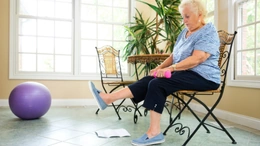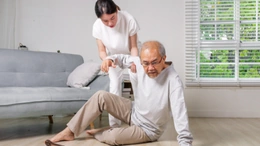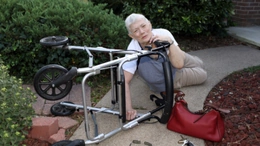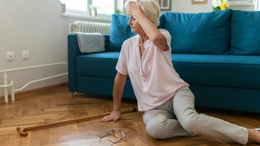Is It Time To Consider A Move? What Independent Living Seniors Should Know
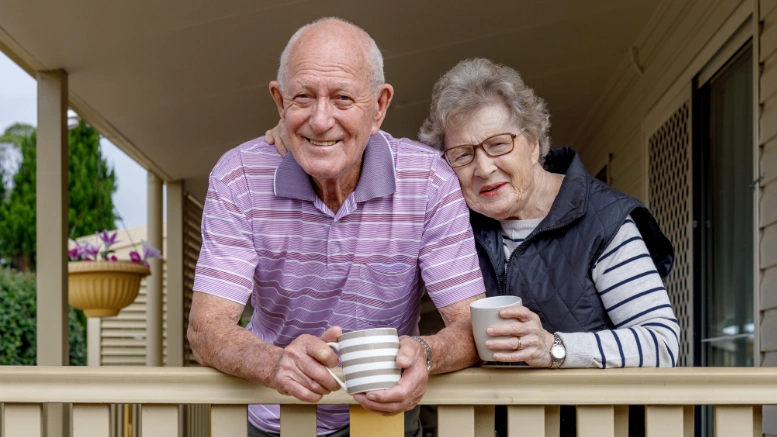
There’s a moment, a quiet one, when the question first arises in a senior’s mind. It might be caused by a neglected stove burner, the stillness of days in a quiet house after the hustle and bustle of life, or just plain worn out from the lawn maintenance.
This question isn't just about practicality; it's about emotion: Is it time to move? For older adults living alone, especially those who have always managed their affairs on their own, contemplating a change in their living situation to move into a community for independent living seniors can be challenging.
Signs It Might Be Time For Elders To Move
Staying put can feel like staying in control. But we can have comfort without sacrificing safety and connection. Approximately 90% of seniors want to stay in their homes as long as they can (AARP).
However, research indicates that 13% of adults over 65 will require forms of senior housing. The challenge is understanding when it is time to no longer hold on and what that next step looks like.
1. Your Home Feels Like A Full-Time Job
There isn’t a checklist that can tell someone when to move. But life has a way of sending signals, subtle at first, then persistent. A burned-out lightbulb that stays unchanged for weeks. Groceries left to expire.
A persistent feeling of being cut off. A study found that 39% of seniors struggle with home maintenance, and for many, it becomes a safety risk.
- Leaky roofs, broken steps, overgrown yards, these aren’t just nuisances. They’re hazards for the elderly to manage.
- Unexpected repairs drain savings faster than expected.
2. Loneliness Creeps In
According to the U.S. Census Bureau, around 27% of adults aged 65 and older live alone. For many, this independence is cherished.
But when independence begins to feel like managing everything without support, it might be time to reevaluate. Humans aren’t meant to live in silence. According to the CDC, social isolation increases the risk of dementia by 50%.
- If the majority of your social interactions happen on a screen or at the doctor's office, it may be time for a shift.
- Independent living communities aren’t just apartments, they’re built-in friend groups.
3. Health Is Starting To Call The Shots
Maybe driving at night seems dangerous, or cooking has become a hassle. 1 in 4 seniors skip meals due to the difficulty of cooking.
If you are making adjustments to your life based on your limitations instead of living your life, people in a caring community could help you navigate your life again.
4. Cognitive Changes
The effects of cognitive changes may include missed appointments, loss or duplication of medications, etc. These kinds of changes can create anxiety for family members who begin to fret about safety or forgotten medication schedules.
When forgetfulness becomes more than just an occasional blunder, there may be an indication of environments that can enhance memory and orientation.
5. Emotional Shifts
Mood changes (increased anxiety, increased irritability, lack of interest in hobbies) can be seen as an inconsistency between reality due to your environment and emotional needs.
The emotional toll of handling the responsibilities of a household can feel heavy for a person, especially after losing a partner or even friends.
What were once fulfilling obligations can become burdensome. If joy is being exchanged for fatigue or indifference, a supportive and engaged community can bring that vitality back.
6. Home Safety Challenges
Even if there have been no changes in mobility or balance, there could still be factors that render the home unsafe. According to the CDC, one in four Americans aged 65 or older will experience a fall in any given year.
This provides an even more convincing argument for home safety. A single fall can lead to hospitalization for a fractured hip or result in a permanent loss of mobility. Moving to an appropriately designed space could help significantly reduce any risks.
Common Concerns Seniors Have
The idea of moving, especially in later years, can feel like being asked to erase a lifetime. Homes are not just walls and floors; they are memory archives. That chair by the window, the garden planted thirty springs ago, the clock that hasn’t ticked in years but still stays on the shelf.
Fear Of Loss Of Independence
Most older adults express concern that independent living means an end to their being independent and having others tell them what to do.
However, in most independent living communities for seniors, every effort is made to support autonomy by providing flexible schedules, private spaces, and choices in personal daily schedules.
Financial Status
Cost is one of the first things people think about. With an average monthly cost of around 5,900 dollars, as reported in a survey, many fear it is unaffordable. However, when compared with maintaining a home and hiring outside help, it often comes surprisingly close.
Downsizing Challenges
The physical part of downsizing can be daunting. Choosing what to keep, what to give away, or throw away can elicit feelings of mental exhaustion.
However, for many people, this can also be a liberating and fulfilling process that creates closure - the ability to enjoy some amazing freedom and lifestyle with less stress.
How Independent Living Communities Can Help The Elderly?
Picture a place where someone else takes care of the gutters, where meals appear without chopping onions, and where neighbors gather without having to coordinate three phone calls and a carpool. It’s not a luxury; it’s a relief offered by the independent living communities for seniors.
- Built-in community: Many older adults experience a deep drop in social connection once they stop working or volunteering. Independent living communities often solve this with thoughtful social structures.
- Uplift in mood and well-being: According to a 2022 National Poll on Healthy Aging by the University of Michigan, independent living seniors in structured communities reported higher levels of optimism and daily engagement than those living alone.
- Safety without sacrifice: Independent living communities are not hospitals, but they do provide quiet safety nets.
Conclusion
This isn’t about “giving up” your home. It’s about choosing a new chapter, one where someone else handles the chores, and your biggest decision is whether to join the morning tai chi class or sleep in.
Well, the best time to move is before a crisis forces your hand. Tour a few places. Talk to residents. You might just find yourself saying, “Why didn’t I do this sooner?”.






